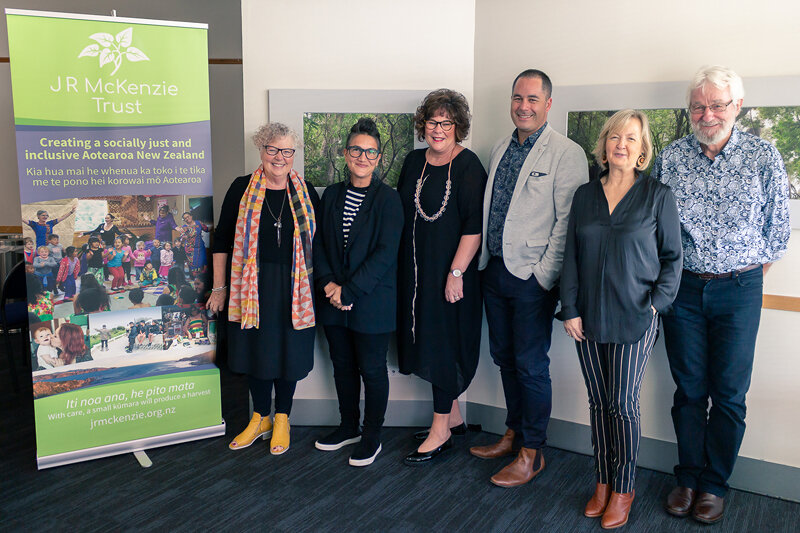The Future Waits for No One – Education and the New Work Order
Following a call at the Philanthropy Summit 2017, the J R McKenzie Trust has been instrumental in setting up an Education Funders Network with PNZ, convening a number of hui for funders and also Ministry of Education.
At this year’s Philanthropy Summit, the Trust hosted a panel session facilitated by Jim Matheson, focussing on social change in education and the work place. The panel comprised Jan Owen (CEO, Foundation for Young Australians), Dr Eruera Tarena (Kaihautu/Executive Director, Tokona te Raki: Māori Futures Collective) and Anya Satyanand (CEO, Prince’s Trust New Zealand).
Jan Owen started the discussion by presenting some of the research that has been conducted by the Foundation for Young Australians around the New Work Order.
Jan Owen getting the kōrero started
She stated that the workplace is now typified by dramatic forces of change which include automation, globalisation and flexibility. These trends are impacting young people everywhere in the world and it’s anticipated that the average 15-year-old today will work 17 jobs across five different industries during their careers. This all sounds very interesting, but Jan asked “how does a young person need to be equipped in order to navigate this situation successfully?”
Considering that over the past three years, the percentage of employers seeking digital skills has risen by 126%, bilingual skills by 181%, critical thinking skills by 158%, and creative skills by 65%, the path to meaningful employment is visibly changing. Young people will need enterprise skills, an optimistic mindset, relevant experience, and the ability to easily transfer their abilities from one career path to another in order to thrive.
Dr Eruera Tarena spoke of Tokona te Raki: Māori Futures Collective and how it uses social innovation tools to drive long-term systemic change to enable Māori success and tackle inequality at its roots. The initiative crosses traditional boundaries of education, employment and enterprise. He stated that when we are bombarded with forces of change, it presents us with a chance to consider what opportunities are being presented.
Using awa imagery, he said that he is asking the rangatahi of the Ngāi Tahu takiwā to imagine a destination they have never been to before and start to dream again. He wants to see rangatahi Māori unlock their potential so that they can be part of the solution but said that it cannot be left to the next generation to figure this out alone.
Dr Eruera Tarena shows the awa visualisation used to inspire rangatahi
Eruera stated that he believes that Māori represent the workforce development project for a brighter future. He said that he wants to see innovation prioritised, a move beyond intent to impact, a redesign for equity, and a change in the narrative. Ultimately, ‘what’s good for Māori is good for everyone’.
Anya Satyanand provided a summary overview of all the detailed information that had been presented by Jan and Eruera. She captured the wealth of knowledge and reiterated it in a straightforward, clear-cut way leaving the audience with much to consider going forward.
Anya Satyanand sums it all up




